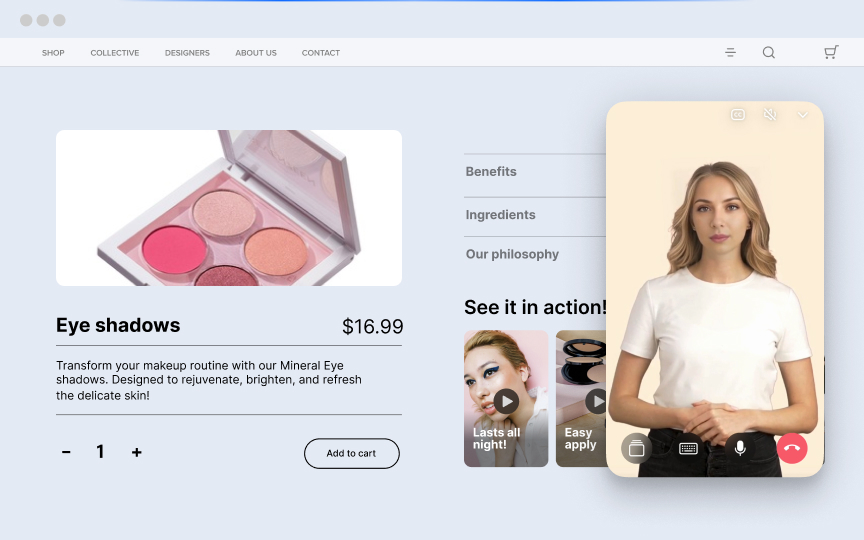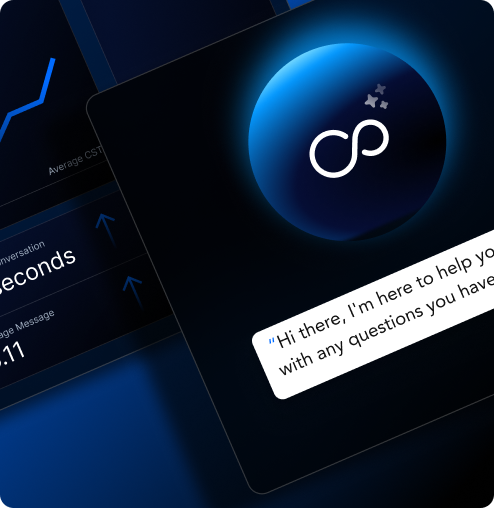Future of Web Commerce 3.0 on the Open Web
We have come a long way from the days of Web 1.0, offering a restricted, read-only experience. The early days of the Internet paved the way for the centralized platform era of Web 2.0, dominated by social media platforms like Facebook, which invited participation from consumers.

Now, the future in the form of Web 3.0 is already here. A decentralized, open-web experience that harps back to the early days of Web 1.0 but removes middle-men controlling the flow of information and traffic to digital properties. However, the participatory element gets a massive upgrade as video is fast becoming the de-facto communication medium for new-age consumers: GenZ and Millennials. In Firework's latest webinar, we talked about the implications of video's growing popularity, consumer behavior evolution, and how commerce is becoming decentralized yet hyper-connected thanks to Live Commerce powering omnichannel digital transformation.

This blog captures excerpts from the insightful conversation between Jeff Lucas (CRO, Firework), Vincent Yang (Co-founder & CEO, Firework) & Brian Pearlman (Head of DTC, Firework). To listen to the whole conversation, check out the on-demand session here.
Web 3.0 is the Future - What Does That Mean for Different Stakeholders?

The earliest Internet iteration was focused on search as consumers were actively seeking information. Web 2.0 was platform focused gave rise to social networking on centralized ecosystems. With Web3, the orientation lands squarely on ownership.
- For consumers: New-age, young consumers want to own their experience and also control their data privacy in the process
- For Creators: The 'creator economy' is enabling content creators to have complete control over the creative process, their content, and their brand
- For Business: Brands have realized the importance of owning the customer data to deliver better experiences at scale
Current Situation - Websites with Poor, Read-only, Non-interactive Experiences
The truth is, 97% of E-Commerce transactions happen on websites on the open web. With over 350 million websites in existence today, and close to 600k websites being added daily for access, the momentum is shifting quickly from walled gardens to the decentralized website ecosystem.
Statistics suggest doubling online video consumption per week, per person since 2018.

The share of time spent on media consumption is massively skewed toward digital, with a 62% time-share in 2022.

However, the critical challenge that exists today is the digital experience. Consumers spend more time on social media platforms because of short-form content and a mobile-optimized, swipeable experience.Websites are still living in the past with an age-old navigation experience dictated by text and images. According to data, 75% of consumers spend less than 10 seconds on websites. In comparison, social media users spend just under 2 hours watching short-form video content! The result is a less than sticky experience and high churn rates across websites.
To take back control from the walled gardens and enable Web3's truly decentralized, open web experiences, brands need to create a powerful, immersive, and video-first experience that integrates content and commerce seamlessly.
"For GenZ consumers, mobile-optimized, video-powered, live content is the default language of communication. They demand more interactivity and integrated experiences, bringing together the offline and online world closer together." - Vincent Yang, Co-founder & CEO, Firework.
Building a Modern E-Commerce Experience
Brands need to pivot to an interactive, video-first experience that is participatory and creates an immersive, interactive shopping experience that is fun and brings immense value and convenience to the end consumer. With Firework, brands like Monnari & American Girl are revolutionizing customer engagement by leveraging shoppable short-form videos and interactive Livestream shopping throughout the customer journey.

From first impression to conversion, shoppable videos and live streaming are powering the E-Commerce paradigm shift where consumers enjoy integrated, interactive commerce + content experience. For example, with Livestream shopping, consumers can connect with the brand directly in real-time, interact with the hosts and other stream viewers, and also enjoy the convenience of online shopping within the same community-driven experience.
Learning from China's Meteoric Live Commerce Growth

The scale of Live Commerce operations is almost staggering, but the rapid adoption comes as no surprise. By 2022, Live Commerce in China will generate around 600 billion$ in GMV. Nearly 50% of China's E-Commerce sales will be powered by Live Commerce in the region. Taobao Live, the top Live Commerce platform, generated 76 billion$ GMV in 2021, powering close to 21% of Alibaba's total eCommerce revenue! Live Commerce is bringing 'shoppertainment' to the forefront as consumers are discovering a video-powered, interactive online shopping solution that solves multiple issues:
- Reducing the gaps between discovery to consideration to purchase
- Creating an immersive video layer that delivers a much higher level of product/service comprehension
- Real-time interactivity between multiple parties (brands, influencers, community)
The Secret Sauce to Growth
- High frequency of live streams to build a habit and educate consumers
- Leveraging retail storefronts to create an authentic phygital shopping experience
- Using actual salespeople to develop genuine, organic-feeling content that resonates with the average consumer
- Making Livestream shopping a central part of the digital properties (website/app) and not hiding it
With Live Commerce, brands can capitalize on significantly higher engagement and intent to purchase. Firework powered brands report:
- 400% engagement uptick (session time per user)
- 3X Conversion rate uptick (Add-to-cart)
- 3X Retention rate uptick
To capture the attention of modern consumers, brands need to demonstrate a sharper understanding of evolving customer trends. Consumers are no longer looking only for products. They want to invest in purpose-driven brands that craft compelling digital experiences with intricate story-telling.
The fusion of the physical and digital world makes omnichannel digital transformation crucial. Brands need to invest in building a rich, immersive experience powered by short-form, live video, and integrated shopping to achieve unrestricted business growth.

Schedule a Live Commerce consultation with one of our sales architects today to understand how you can get started.










